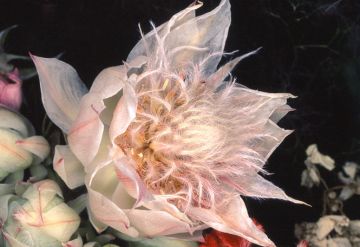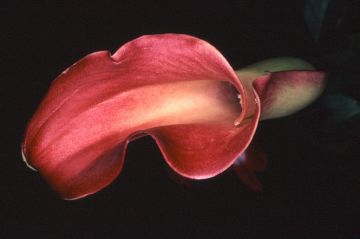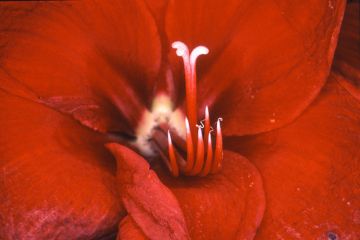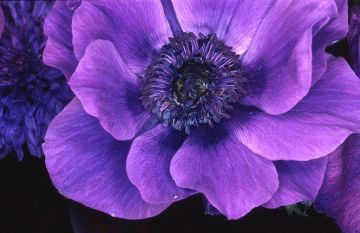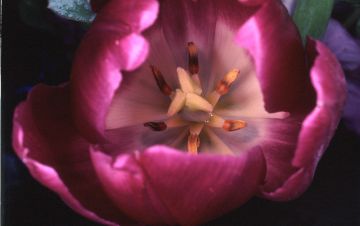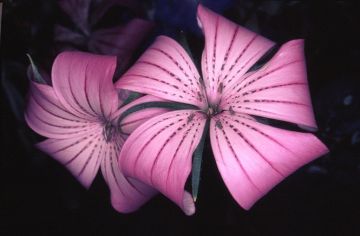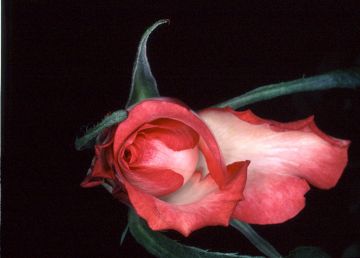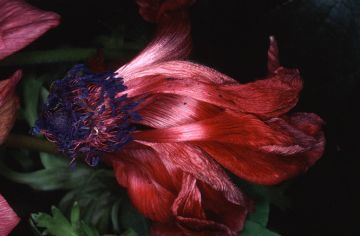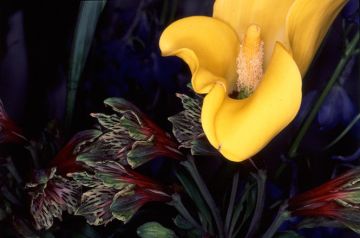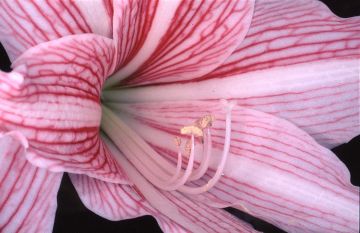Flower Rondeau
Flowers preyed on Araki’s imagination as symbols of Eros and Thanatos since his childhood. Growing up nearby Jyokanji temple in downtown Tokyo, a place where spirits of courtesans from Yoshiwara were enshrined, Araki used to watch the cut flowers offered at the graveyards. To Araki, arranging decayed flowers is a form of revival, and photography records the beauty of brevity eternally.
Nobuyoshi Araki once observed that “to make what is dynamic static is a kind of death. The camera itself, the photograph itself, calls up death. Also, I think about death when I photograph, which comes out in the print.” In Flower Rondeau, one immediately notices the contrast between life and death, animated by a half-closed flower exposed against a dark blue backdrop. The veins of the flower emphasize its vitality, while its closed and withering petals demonstrates its fragility—and the fragility of life itself.
Araki’s floral still lifes can be viewed alongside the photographer’s kinbaku portraits as erotic and sexual visions. The opening and transparent petals are captured in a state of revealing, comparable to the various degrees of undress that his female models are shown. Flower Rondeau makes clear that the flower is a reproductive organ by highlighting both the stamen and carpal. As much as flowers die and decay they are also wombs wherein new life begins and the future materializes.
Literature S. Jerome, Araki, Cologne, 2002, p. 110 (illustrated)
